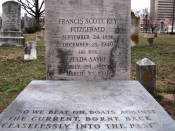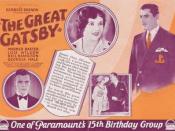Linguistic Choices in The Great Gatsby
The Great Gatsby emerged in the 1920's with triumphant fanfare, cementing its place as a classic American novel as well as proclaiming its classification as a modern onr. The Great Gatsby pushed the boundaries of literature by abolishing preconceived notions of viewpoint, emotional language, and examining real world issues. The presentation of death in The Great Gatsby is unusual and is dealt with in a journalistic fashion; similar to the way death was and is depicted the media. This is largely due to the fact that in both accounts of death in the novel (Myrtle Wilson's and Gatsby's murder), our first person narrator, Nick Carraway, is not present. Therefore, much as the author of the newspaper article, he is describing an event that he himself was not present at. Because he is not involved in the event, the narration style switches from first to third person ("At two o'clock Gatsby put on his bathing suit" p.161)
just as a news article is told in the third person because the journalist was not directly involved in the event he is describing. This shift in the point of view is an interesting stylistic choice, but one that further emphasizes the novel's classification as a modern one. Whilst traditional literature would almost always maintain the same point of view throughout the novel (for example, if Fitzgerald were telling the reader about the events in a traditional context, he would use a device that did not alter the viewpoint) modern literature is much more liberal in its linguistic choices.
Indeed, not only does Fitzgerald change the point of view but also the perspective - at one point handing the narrative to Jordan Baker for that "One October day in nineteen seventeen" (p.74). This allows him to...


